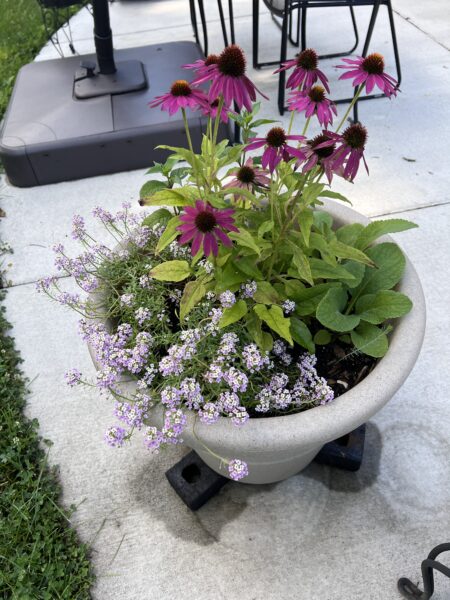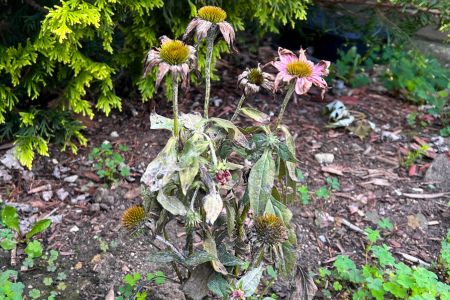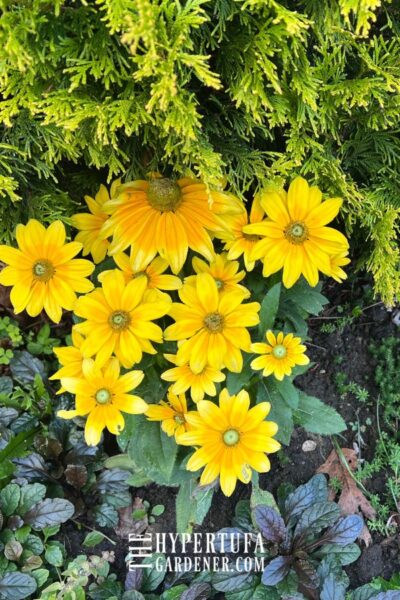Why Did My Coneflowers Turn Brown And Die?
Coneflowers, with their vibrant blooms and low maintenance requirements, have become a favorite of mine and probably a lot of gardeners. Typically coneflowers are easy and flower all summer once they get started.
However, like any other plant, I am facing some problems this year that I had not had previously. I needed to explore some of the common problems faced while growing Coneflowers, focusing on diseases and viruses that can affect their health and vitality.

Perhaps you need some of this information as well and can take measures to ensure your Coneflowers flourish and add a splash of color to your garden.
Is it Powdery Mildew? One of the most prevalent diseases that affect Coneflowers is powdery mildew. It presents itself as a white, powdery substance on the plant’s leaves and stems, inhibiting their ability to photosynthesize effectively.
Powdery mildew typically thrives in humid conditions and can spread rapidly in crowded or poorly ventilated areas. I didn’t feel that my conditions were such that this could be my problem.

If this is your problem, try this. To prevent powdery mildew, ensure proper spacing between Coneflowers to allow for adequate air circulation.
Water the plants at their base to avoid wetting the foliage, and consider applying fungicide early in the growing season as a preventive measure.
I did plant my Coneflowers ( Echinacea) from winter sowing, but those seem to face another problem of the four-legged variety! Rabbits?

They were usually eaten down to one leaf, but as soon as they grew back, those new leaves were eaten off again. I will keep trying!
My Most Likely Problem
Is it Botrytis Blight? Botrytis blight, caused by the fungus Botrytis cinerea, is another threat to Coneflowers. This disease is prevalent in damp conditions and can cause grayish mold to develop on the plant’s flowers, buds, and leaves. Infected plant parts may become mushy and decayed.
Since my coneflowers seemed to be grayish, but were planted well apart, I thought this could be the cause of my problems. Lucky me!

Here’s the solution. Avoid overhead watering, as excess moisture can promote the development of Botrytis blight. Instead, water at the base of the plant. I need to rig up some drip irrigation, I guess.
Remove and dispose of any infected plant debris, and apply fungicide to protect healthy plants. I ordered some
I have pulled four coneflower plants so far. Pulling them one by one, I took them and threw them into our firepit when it was burning with tall flames. I tried to pull gently and carry carefully so not to distribute any spores of any kind.
The Pow Wow Wild Berry was the particular variety that seemed to have the problem. Some survived, but most died. Prairie Sun seemed unaffected.

I will treat the other plants with my fungicide and spray the holes where I pulled them. Hopefully that will take care of anything left surrounding them. The other Coneflowers “Prairie Sun” seem to only have a slight problem beginning, but I will treat them immediately.
Growing Coneflowers can be a easy and you are rewarded by beautiful flowers all summer long. But it’s essential to be aware of the potential challenges they may face. By recognizing and understanding diseases and viruses that commonly affect Coneflowers, you can implement preventive measures and maintain a thriving garden.
Proper care, regular inspection, and prompt action are the keys to ensuring your Coneflowers remain healthy, vibrant, and a delightful addition to your outdoor space.


